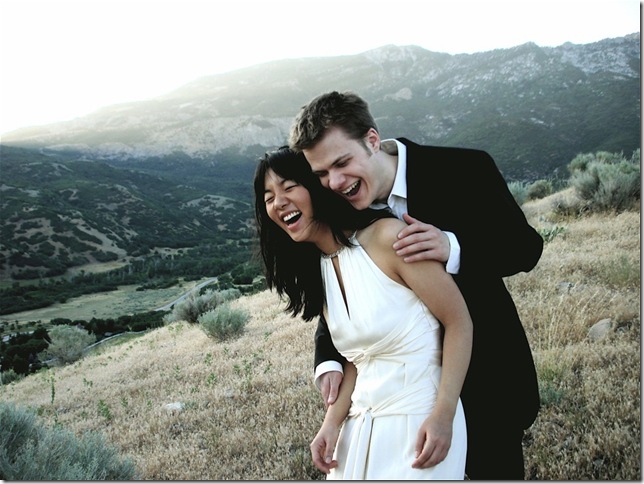Pianists Greg Anderson and Elizabeth Roe brought a capacity crowd of 280 to their concert in the Grand Ballroom of Mar-a-Lago on March 20. The largest audience yet for this fledgling arts organization heard expert playing and superb dancing by students from the Dreyfoos School of the Arts in Stravinsky’s Rite of Spring.
The pianists met at the Julliard School in New York in 2000 and formed their dynamic partnership after gaining their master’s degrees. They have played all over the world and seem to have conquered the Internet, too, bringing the joys of their kind of music making to untold millions.
Playing in the apse of the hall, Anderson and Roe began with Bach’s Brandenburg Concerto No. 3 in G major, arranged by the early 20th-century German composer Max Reger for one keyboard, four hands. With their backs to the audience, Anderson took the top half and Roe the lower half of the keyboard.
Opening with the familiar Allegro moderato, their playing was nothing short of brilliant. Their playing left me in awe and amazement. The second Allegro was smooth and effortless, and roars of applause met their interpretation and brilliant technical command.
The highlight of the evening was the next piece, The Rite of Spring, with nine athletic and graceful dancers from the Dreyfoos School of the Arts. Six teenage women and three adolescent men performed silently on the rose-colored marble floor surrounding the pianists. The two pianists — four hands, one keyboard — took the audience through Stravinsky’s controversial and stark story of human sacrifice in savage, primitive Russia.
 Matching choreographer Christopher Huggins, formerly a solo dancer in the Alvin Ailey American Dance Theatre, with the nine dancers from Dreyfoos was a stroke of genius by the society’s impresario and artistic director, Mike Finn. Huggins’ choreography was clever, tasteful, and fit the music perfectly. To have worked with Huggins, a world-renowned choreographer, must have been thrilling for the students, each one of whom is surely marked for a career in dance. They were all spectacular.
Matching choreographer Christopher Huggins, formerly a solo dancer in the Alvin Ailey American Dance Theatre, with the nine dancers from Dreyfoos was a stroke of genius by the society’s impresario and artistic director, Mike Finn. Huggins’ choreography was clever, tasteful, and fit the music perfectly. To have worked with Huggins, a world-renowned choreographer, must have been thrilling for the students, each one of whom is surely marked for a career in dance. They were all spectacular.
I attend the mecca of American dance, Jacob’s Pillow, every year and would have transported this fine troupe of nine on a moment’s notice, so proficient and professional were their movements. With increasingly difficult athletic body contortions they danced like pros. The audience was riveted. Banging away at the piano, the pianists too were choreographed into the surrounding ballet, but only minimally. As for this transcription for piano, which is Stravinsky’s own, I don’t care for it as much as the orchestral version.
Written in 1913, it was orchestrated for quintuple winds and percussion. It is densely polytonal in its driving rhythms, but none of these colors came across in the piano version. Anderson and Roe tried hard to bring it to life, especially in the center sections where the music turns mysterious with ephemeral melodies of the spheres. Toward the end they knock out Stravinsky’s throbbing monotonous themes brilliantly, working well together, playing from memory as the piece ends in discords and syncopated evocations.
Two Steinway grands now graced the pink marble apse floor as the pianists played Rachmaninov’s Suite No. 1 for two pianos (Op. 5), subtitled Fantasie-Tableaux. Typical of this composer, the Barcarolle, begins romantically with Anderson picking out the melody and Roe the lovely decorations. It’s an exquisite piece. Part 2, The Night … The Love, has Roe playing the melody, which hints of nightingales singing in the woods, and bright clean runs nicely played. Anderson’s decorations filled the space with beautiful reveries, hints of times past, perhaps. It’s very sensitive music.
The Tears, the name given to the third movement begins with a four-note tune, haunting in its construction which is soon double-timed, obviously representing tears running down a face. It climaxes and fades to a dramatic ending with echoes of Rachmaninov’s future piano concertos in these passages.
Easter (Part 4), starts with bright cheerful music on both pianos while one of them plays high bell like notes reminiscent of campanologists going through a belfry workout. One imagines parades of scholars dressed in white moving into a cathedral. Presenting this unfamiliar piece was a brave and daring choice, proving how adventurous these two fine pianists are in their programming. Their playing was brilliant throughout.
However, I would take issue with their next three brief choices. They played Rimsky-Korsakov’s The Flight of the Bumblebee; a jazzy Cat’s Fugue, based on a piece by Scarlatti, and an arrangement of Mozart’s Rondo alla Turca, cutely renamed Ragtime alla Turca; all three created by Anderson and Roe.
Brilliant pianists that they are, I wish they had left well alone and played something by Chopin, Liszt, Barber or even Jeffrey Parola, whose Clarinet Concerto I admired earlier this month at its Atlantic Classical Orchestra world premiere. For an encore, Anderson and Roe played Piazzolla’s Libertango.
Trio Les Amies — flutist Carol Wincenc, violist Cynthia Phelps, and harpist Nancy Allen — will perform music by Ravel and Debussy in the next Chamber Music Society of Palm Beach concert, set for April 10. They will be joined by violinists Doori Na and Foster Wang, cellist Joseph Lee and clarinetist Brad Whitfield. The concert at Mar-a-Lago in Palm Beach begins at 6 p.m. with a cocktail reception, followed by a concert at 7 p.m. Call 561-379-6773 or send an email to info@cmspb.org.
